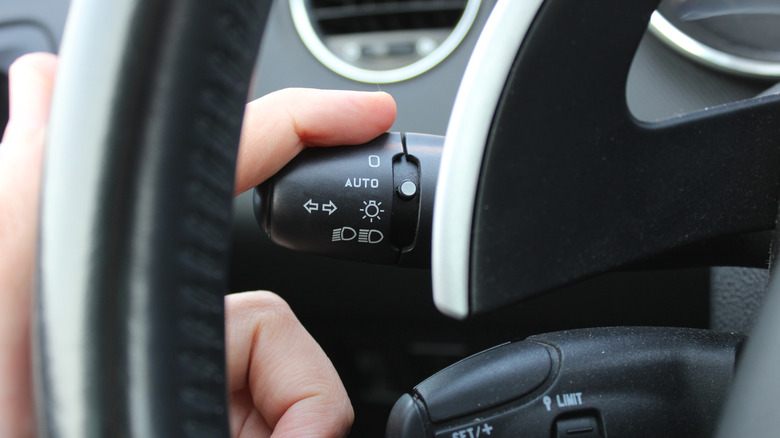Why Are Blinkers Or Turn Signals Called 'Indicators' In England?
You're behind the wheel, about to make a turn, and you flip that little lever next to the steering wheel on your left. If you're in the U.S., you're probably calling it a "turn signal" or "blinker." But in the U.K., that turn signal becomes an "indicator." Similar to how car hoods are called "bonnets" in England, the turn signal switch in both countries is the same car part with the same function, but a completely different name. So why is that?
It's called an indicator in the U.K. because it indicates your intent to turn or change lanes. The term focuses on function, and it's been used in British vehicle language for decades. So while Americans went with the term "turn signal," the British stuck with the more literal approach. Some people in the U.K. also used the term "blinker," likely because the light flashes, but the word never fully caught on.
While the terminology may be different, both countries typically feature the turn signal, or indicator switch, on the left side of the steering wheel. However, while cars in America have red turn signals, British indicators are usually amber.
Improving technology led to better turn signals in England and the U.S.
Long before modern turn signals with their clicking sounds became standard in cars, drivers in England used early tech called "trafficators." Powered by electromagnets, trafficators would swing up from the side of the car to alert other drivers of a turn, and then fold back flush with the car when not in use. They were used on many British cars as well as Volkswagens through the early 1950s.
Meanwhile, in the U.S., Buick took the lead with factory-installed flashing turn signals starting in 1939, calling them "Flash-Way Directional Indicators." At first, these only worked on the rear lights, but by 1940, Buick expanded the system to include front lights and added a self-canceling feature. That year, several General Motors brands made directional signals standard, though some others still offered them as optional extras.
In the 1960s, turn signal tech continued to evolve, and by 1968, the U.S. government began requiring amber lenses for front signals rather than white, to improve visibility. However, the new regulations weren't as strict for the back of the car, as rear signals could still be either red or amber.

